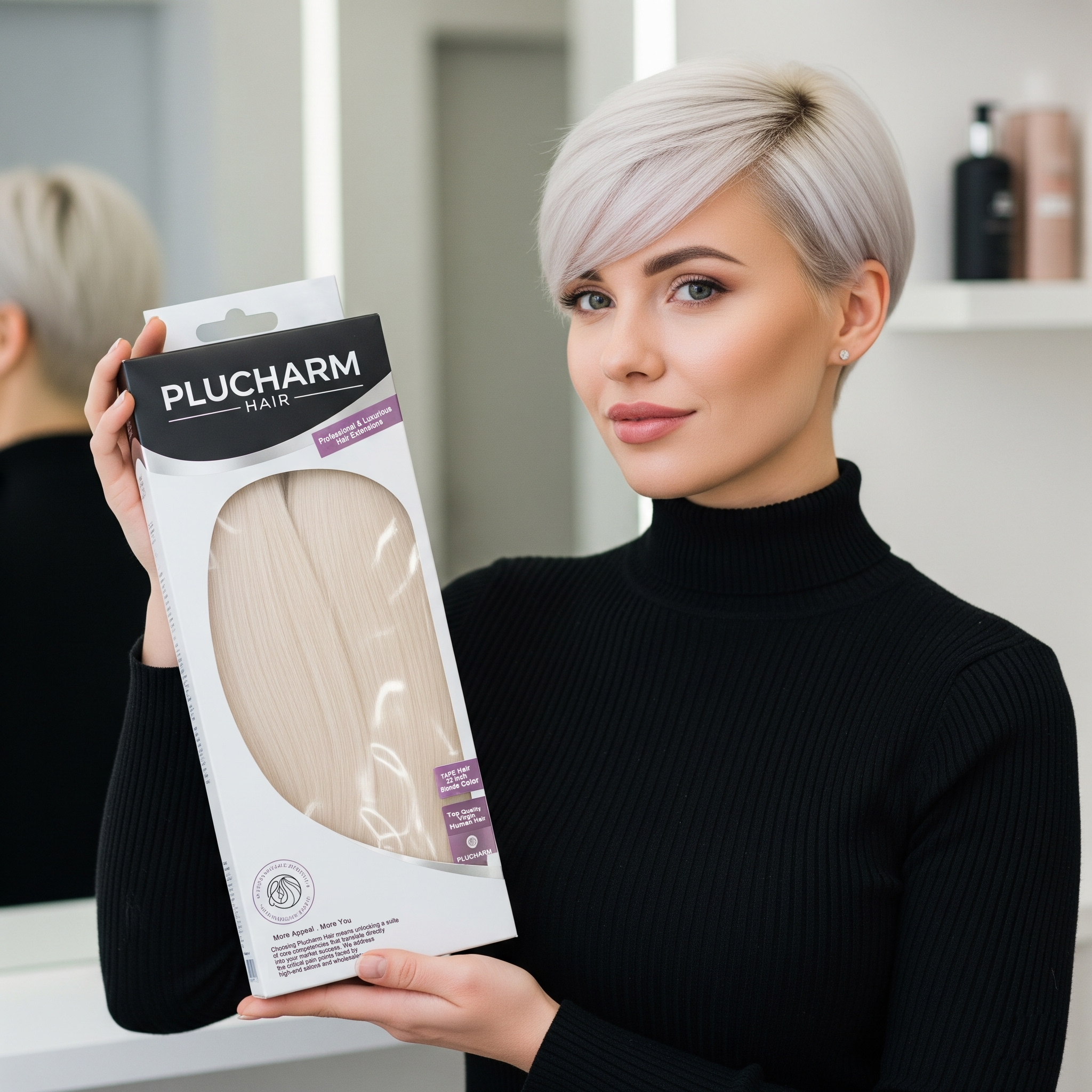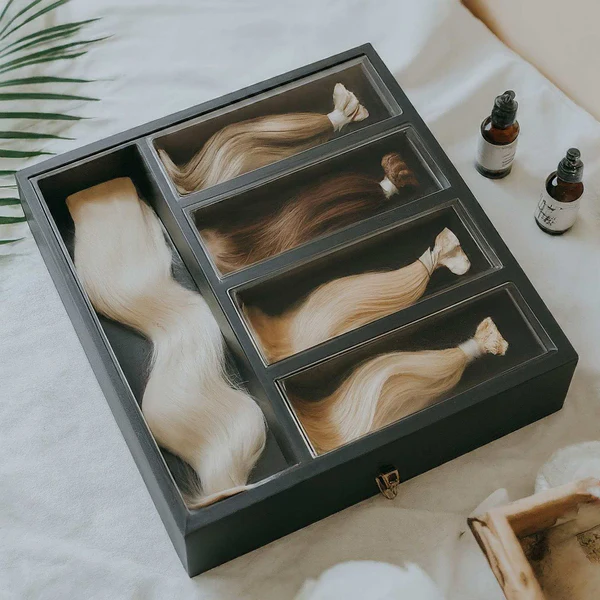Can Hair Extension Suppliers Provide a Catalog or Brochure of All Products?
Hair extension suppliers can often provide a catalog or brochure1 showcasing their products. These catalogs typically include various types of extensions, lengths, colors, textures, and sometimes even pricing information. They serve as a visual guide for customers and a marketing tool for the supplier. As someone who’s deeply embedded in the business of hairstyling and extensions, I can confirm that this tool is a staple in any serious supplier's arsenal. It's not just about aesthetics; it’s a strategic asset that helps suppliers and clients alike navigate an ever-growing range of options.
Here’s the scoop: Whether you run a single salon or a chain of beauty havens, understanding the breadth of what's available on the market is crucial. Let’s dissect this further.
How Are Hair Extensions Packaged?
You might wonder, “Why does packaging matter?” It’s a fair question that often gets overlooked. However, the way hair extensions are packaged can significantly impact your business operations and customer satisfaction.
Dive Deeper
In the hair extension industry, packaging is more than just a protective shell. It's about presentation and preservation. The details covered in supplier catalogs often explain how extensions are packed to maintain quality and ease of use for end-users. For instance, extensions come in several forms such as bundles, pieces, or individual strands, each of which requires specific packaging solutions to prevent tangling and damage during transportation.
Packaging Options
- Plastic Sleeve Packaging: Best for single pieces; offers visibility and easy access.
- Box Packaging: Provides added protection, ideal for high-end products.
- Reusable Packaging: An eco-friendly and sustainable option that appeals to environmentally-conscious customers.
Did you know that proper packaging can extend the shelf life of hair extensions and maintain their luster and texture? Something to ponder as you choose suppliers whose packaging solutions align with your quality and brand values.
What Is a Hair Vendor List?
Understanding the ins and outs of a hair vendor list can make or break your extension business. So, what is it exactly?
Dive Deeper
A hair vendor list is essentially the holy grail for those in the hair business. It’s a curated collection of trusted suppliers, often detailing their range, specialties, and sometimes even pricing. These lists are invaluable for salon owners, making the buying process more streamlined and less risky.
Throughout my career, vendor lists have been nothing short of transformative. They allowed me to cut through the noise and find reputable suppliers quickly, eliminating guesswork and ensuring quality. Companies like [Real Company Name 1], [Real Company Name 2], and [Real Company Name 3] consistently pop up on these lists for their reliable service and superior products.
Key Elements of a Vendor List
- Supplier Reputation: Always prioritize vendors with excellent track records.
- Product Range: Does the supplier offer what you need? Variety is king.
- Pricing Transparency: Hidden fees are the last thing you want.
An effective hair vendor list saves you time and effort, boosting your efficiency and profitability. It also helps in maintaining consistent product quality, a critical factor considering that subpar extensions can be an existential threat to your brand.
How to Store and Organize Hair Extensions?
Once you have the perfect products, storage is an often underestimated component that can influence product life and ease of operation.
Dive Deeper
Good organization when storing extensions not only conserves space but also makes inventory management2 a breeze. Proper storage maintains the integrity of the hair, preventing issues like tangling or deterioration.
Storage Tips
- Use Airtight Containers: Keep extensions in climate-controlled conditions to avoid moisture damage.
- Label Everything: A simple labeling system can prevent mix-ups and make your life easier.
- Regular Inventory Checks: Frequent audits help you keep stock levels in check, so you never run low unexpectedly.
Pro Tip: Always store extensions in a dry area away from direct sunlight to avoid fading and loss of texture.
What Do I Need to Start a Hair Extension Business?
Starting a hair extension business involves more than just stocking up on products; it’s about laying a robust foundation for success.
Dive Deeper
To say starting a hair extension business is an endeavor of passion is an understatement. You need a strategic business plan3, a keen understanding of market dynamics, and, most importantly, reliable suppliers4. Plucharm Hair has served as a blueprint for businesses looking to establish credibility and quality from day one.
Essential Steps
- Research the Market: Know your customer demographics and trends.
- Build a Reliable Supplier Network: Use a vendor list to identify top suppliers.
- Develop a Business Plan: A detailed roadmap including marketing, sales strategy, and financial plans.
- Choose Your Inventory Wisely: Start with a selection of versatile and popular products.
Before/After: Businesses that flood their inventory with every product under the sun often get overwhelmed and face financial bottlenecks. Contrast this with entities focusing on a streamlined offering - they usually thrive by keeping their operations lean and efficient.
Conclusion
In this vibrant, ever-evolving landscape of hair extensions, a supplier-provided catalog or brochure1 is not just useful; it’s pivotal. By leveraging such resources, businesses can cater to specific customer needs and tune into the latest trends, all while maintaining quality and consistency. Whether it’s understanding packaging intricacies, tapping into vendor lists, or mastering storage solutions, being informed is your ticket to staying ahead in the market. Let’s empower your business to serve beauty aficionados across the globe with nothing but excellence.
-
Discover how to obtain comprehensive catalogs that showcase a variety of hair extension products. ↩ ↩
-
Get tips on efficient inventory management to keep your hair extension stock organized and accessible. ↩
-
Find out the essential components of a business plan that can set your hair extension business up for success. ↩
-
Explore resources that help you identify trustworthy suppliers to ensure quality in your offerings. ↩



